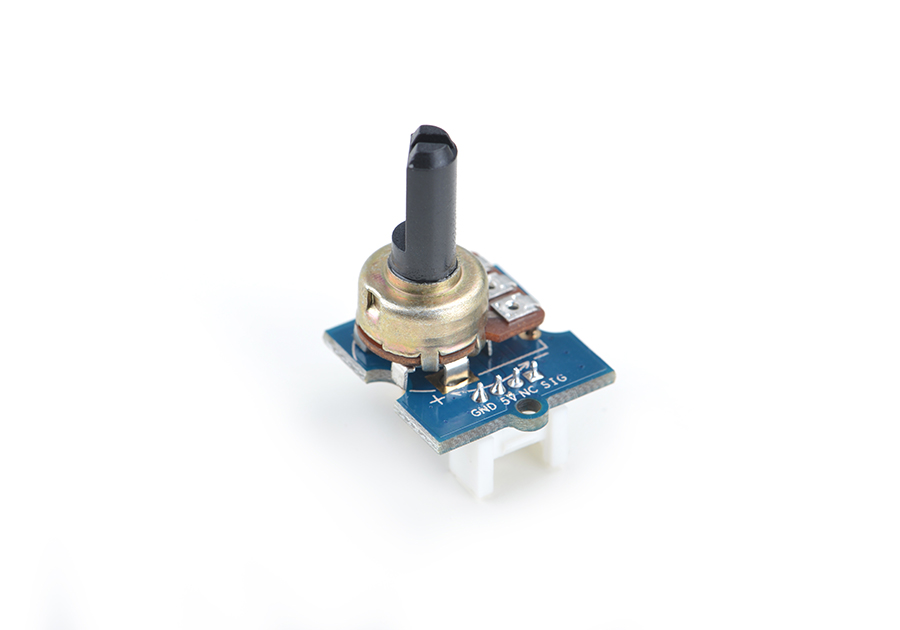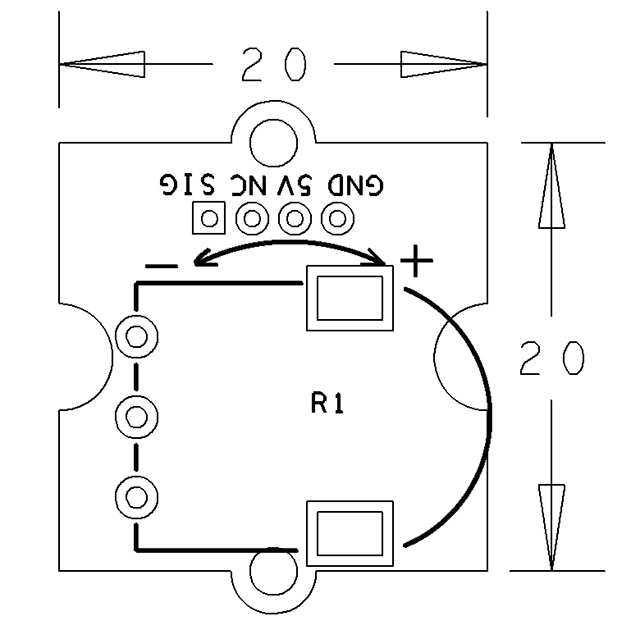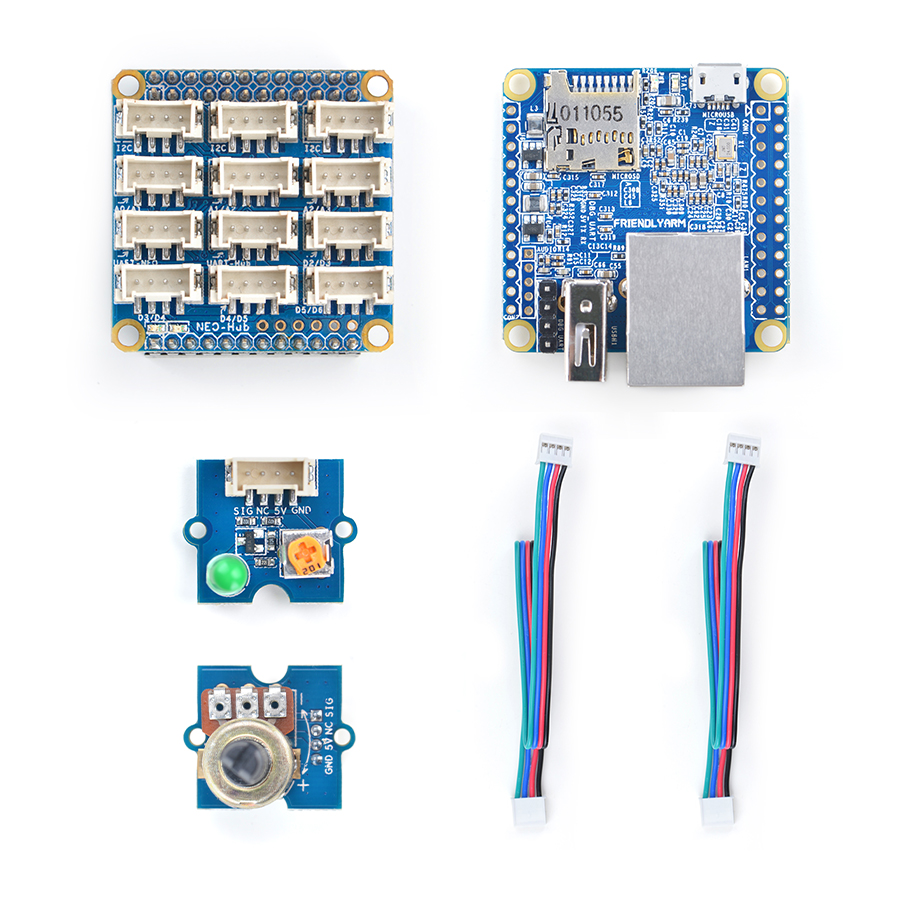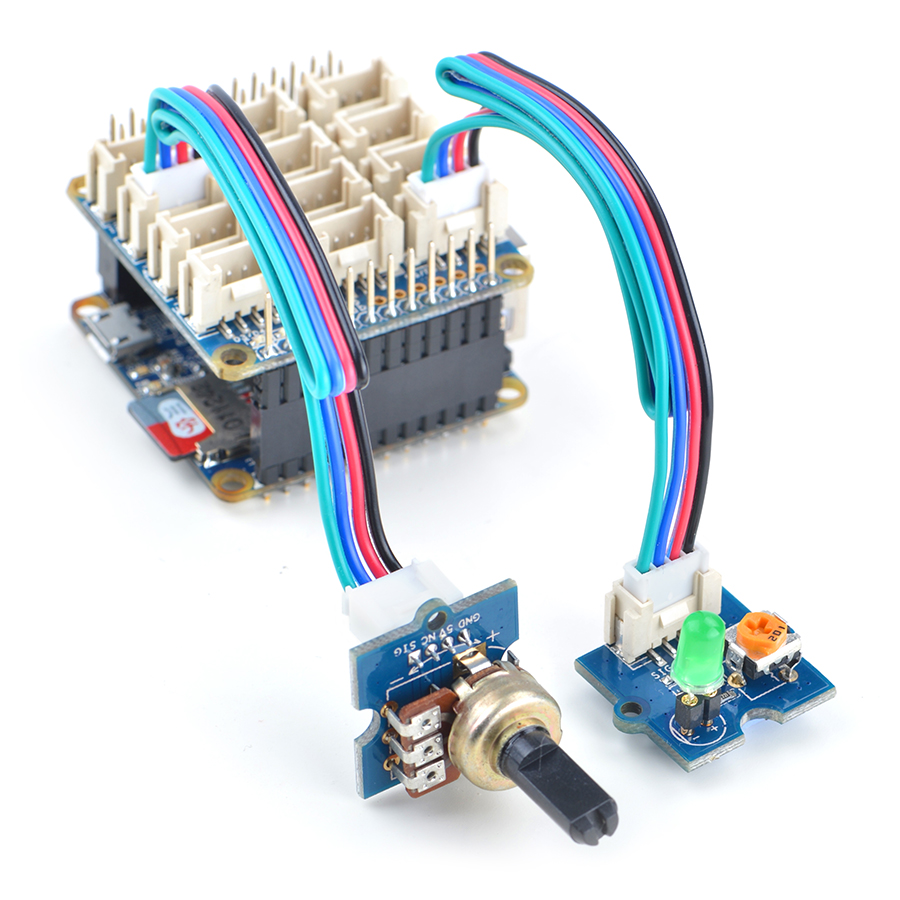Difference between revisions of "BakeBit - Rotary Angle Sensor"
(→示例程序(1):LED Fade) |
(→示例程序(2):Servo and Rotary Angle Sensor) |
||
| Line 103: | Line 103: | ||
When you rotate the rotary angle sensor module the LED’s luminance will change accordingly. | When you rotate the rotary angle sensor module the LED’s luminance will change accordingly. | ||
| − | == | + | == Code Sample(2): Servo and Rotary Angle Sensor == |
| − | + | This code sample shows how to control a servo with the Rotary Angle Sensor module.<br /> | |
| − | + | A [[BakeBit - Servo]] is needed in this test case. For more details about the servo module refer to the [[BakeBit - Servo]] page. | |
== 示例程序(3):LED Bar and Rotary Angle Sensor == | == 示例程序(3):LED Bar and Rotary Angle Sensor == | ||
Revision as of 10:45, 13 December 2016
Contents
1 Introduction
- The BakeBit - Rotary Angle Sensor module is a rotary sensor module. It acts as a variable resistor or rheostat.When the nub is rotated the resistance will change.
2 Hardware Spec
- Standard 2.0mm pitch 4-Pin BakeBit Interface
- Pin Description:
| Pin | Description |
| GND | Ground |
| 5V | 5V Supply Voltage |
| NC | Not Connected |
| SIG | Signal |
3 Code Sample(1): LED Fade
A BakeBit - Rotary Angle Sensor module is needed in this test case.
3.1 Hardware Connection
Connect the LED module to the NEO-Hub at D5 and the BakeBit - Rotary Angle Sensor module to the NEO-Hub at A0:
3.2 Source Code
import time import bakebit # Connect the BakeBit Rotary Angle Sensor to analog port A0 # SIG,NC,VCC,GND potentiometer = 0 # Connect the LED to digital port D5 # SIG,NC,VCC,GND led = 5 bakebit.pinMode(potentiometer,"INPUT") bakebit.pinMode(led,"OUTPUT") time.sleep(1) # Reference voltage of ADC is 5v adc_ref = 5 # Vcc of the BakeBit interface is normally 5v bakebit_vcc = 5 # Full value of the rotary angle is 300 degrees, as per it's specs (0 to 300) full_angle = 300 while True: try: # Read sensor value from potentiometer sensor_value = bakebit.analogRead(potentiometer) # Calculate voltage voltage = round((float)(sensor_value) * adc_ref / 1023, 2) # Calculate rotation in degrees (0 to 300) degrees = round((voltage * full_angle) / bakebit_vcc, 2) # Calculate LED brightess (0 to 255) from degrees (0 to 300) brightness = int(degrees / full_angle * 255) # Give PWM output to LED bakebit.analogWrite(led,brightness) print("sensor_value = %d voltage = %.2f degrees = %.1f brightness = %d" %(sensor_value, voltage, degrees, brightness)) except KeyboardInterrupt: bakebit.analogWrite(led,0) break except IOError: print ("Error")
3.3 Run Code Sample
Before you run the code sample you need to follow the steps in bakebit tutorial to intall the BakeBit package.
Enter the "BakeBit/Software/Python" directory and run the "bakebit_rotary_angle_sensor.py" program:
cd ~/BakeBit/Software/Python sudo python bakebit_rotary_angle_sensor.py
3.4 Observation
When you rotate the rotary angle sensor module the LED’s luminance will change accordingly.
4 Code Sample(2): Servo and Rotary Angle Sensor
This code sample shows how to control a servo with the Rotary Angle Sensor module.
A BakeBit - Servo is needed in this test case. For more details about the servo module refer to the BakeBit - Servo page.
5 示例程序(3):LED Bar and Rotary Angle Sensor
这个示例实现类拟音量调节的效果,用到电位器模块和LED Bar。
该示例是配合BakeBit - LED Bar来实现的,可参考BakeBit - LED Bar页面。
6 相关资料
- [Schematic](BakeBit - Rotary Angle Sensor.pdf)
- [BakeBit Github项目](https://github.com/friendlyarm/BakeBit)
- [BakeBit Starter Kit手册](http://wiki.friendlyarm.com/bakebit/bakebit_starter_kit_manual_cn.pdf)



